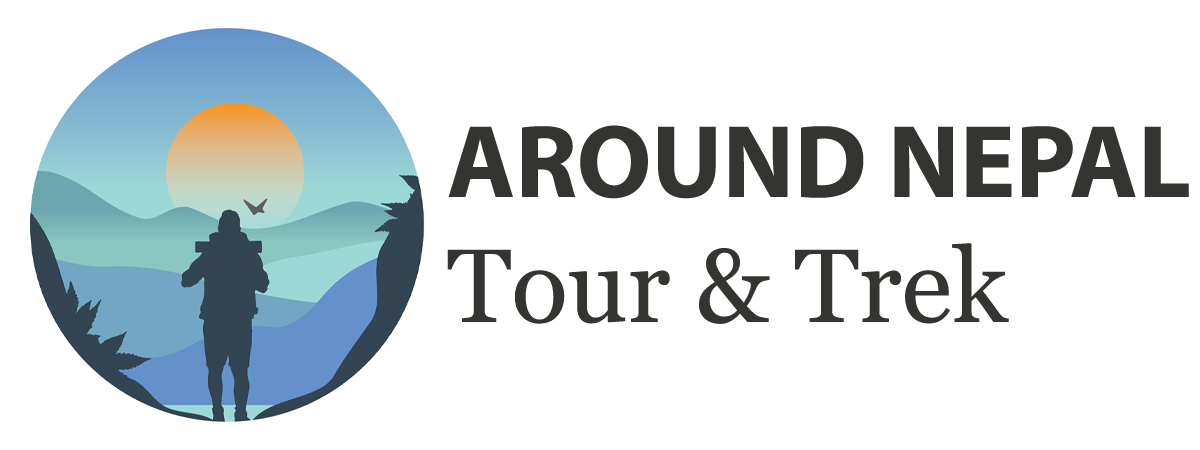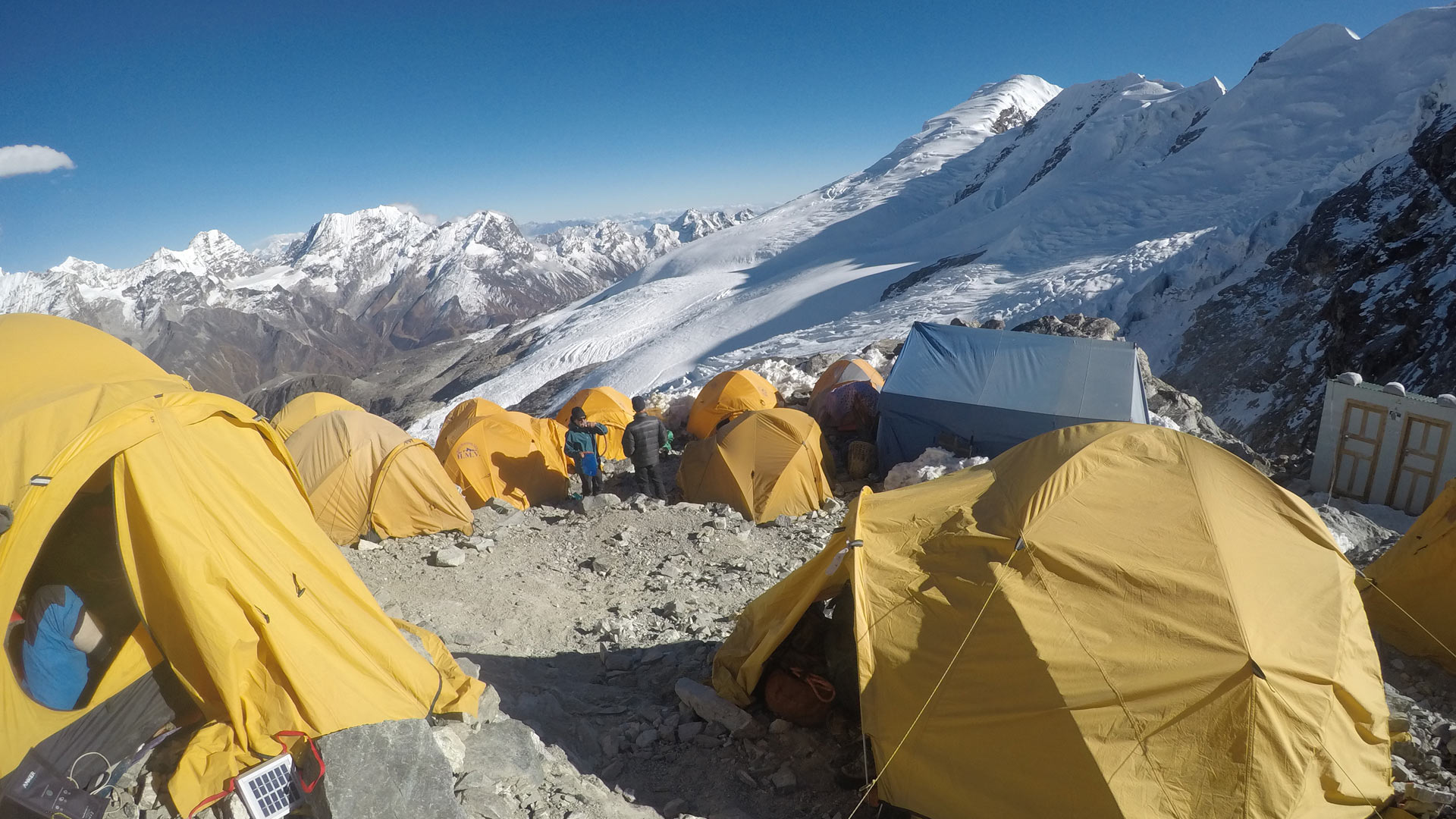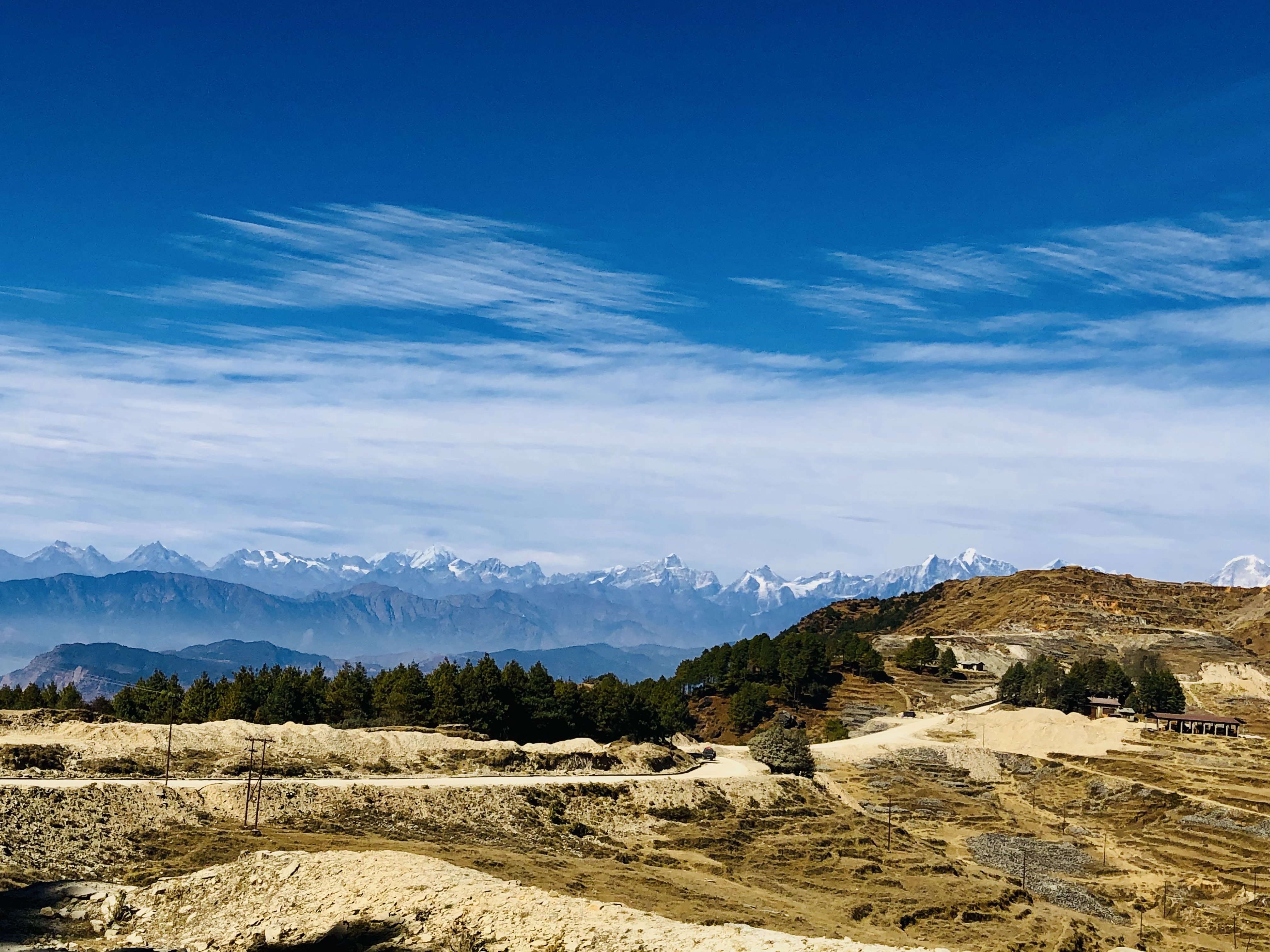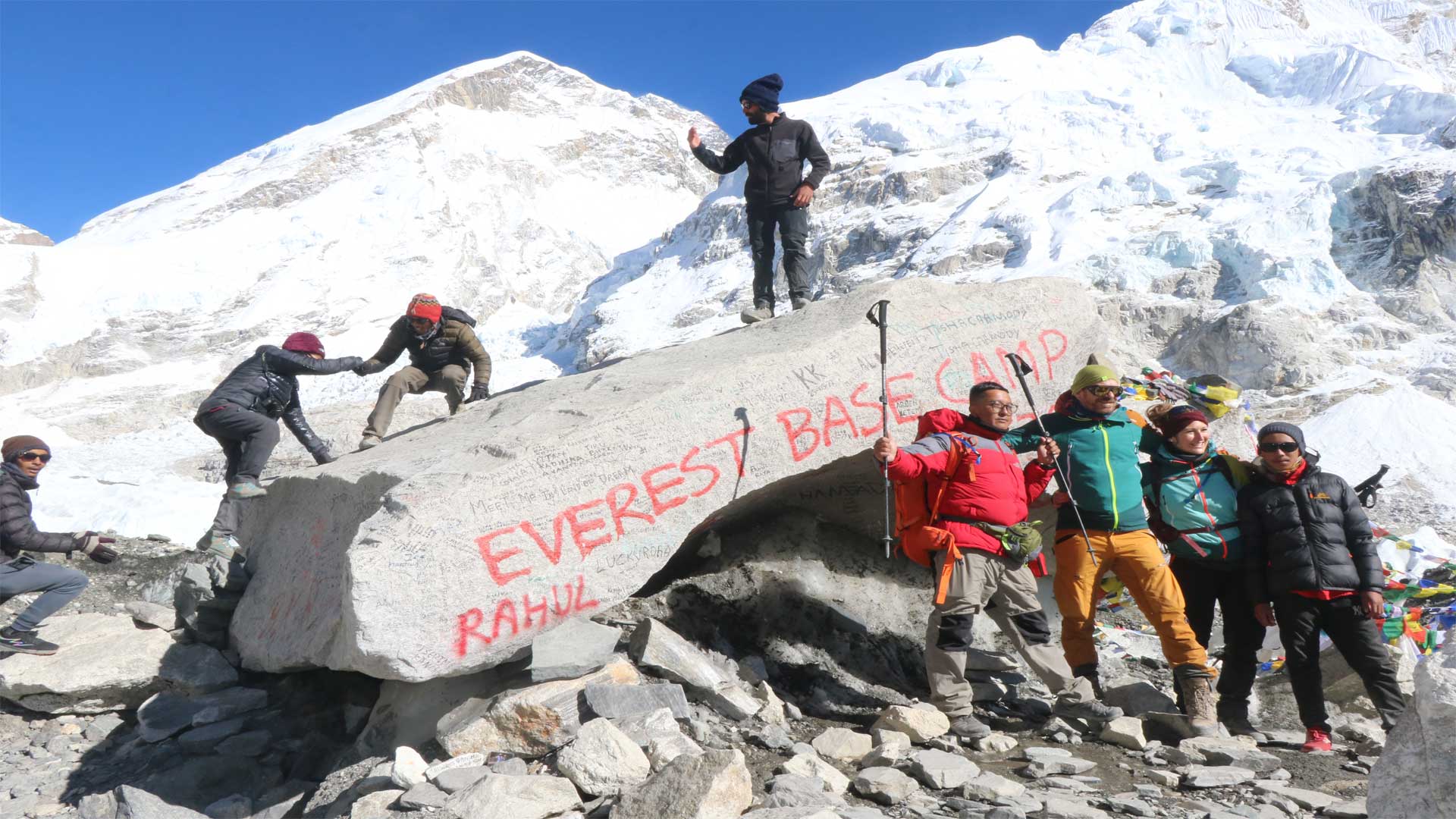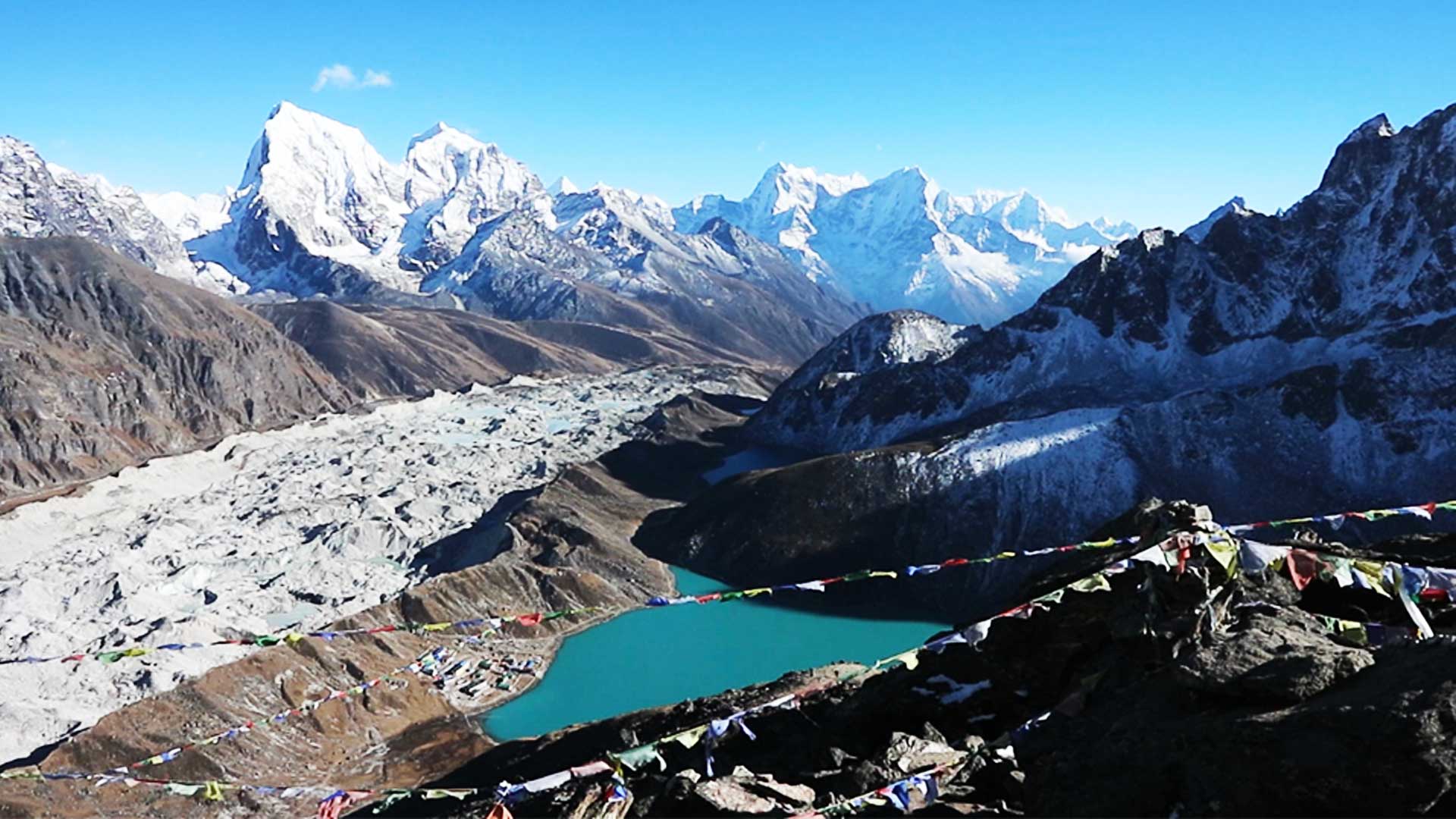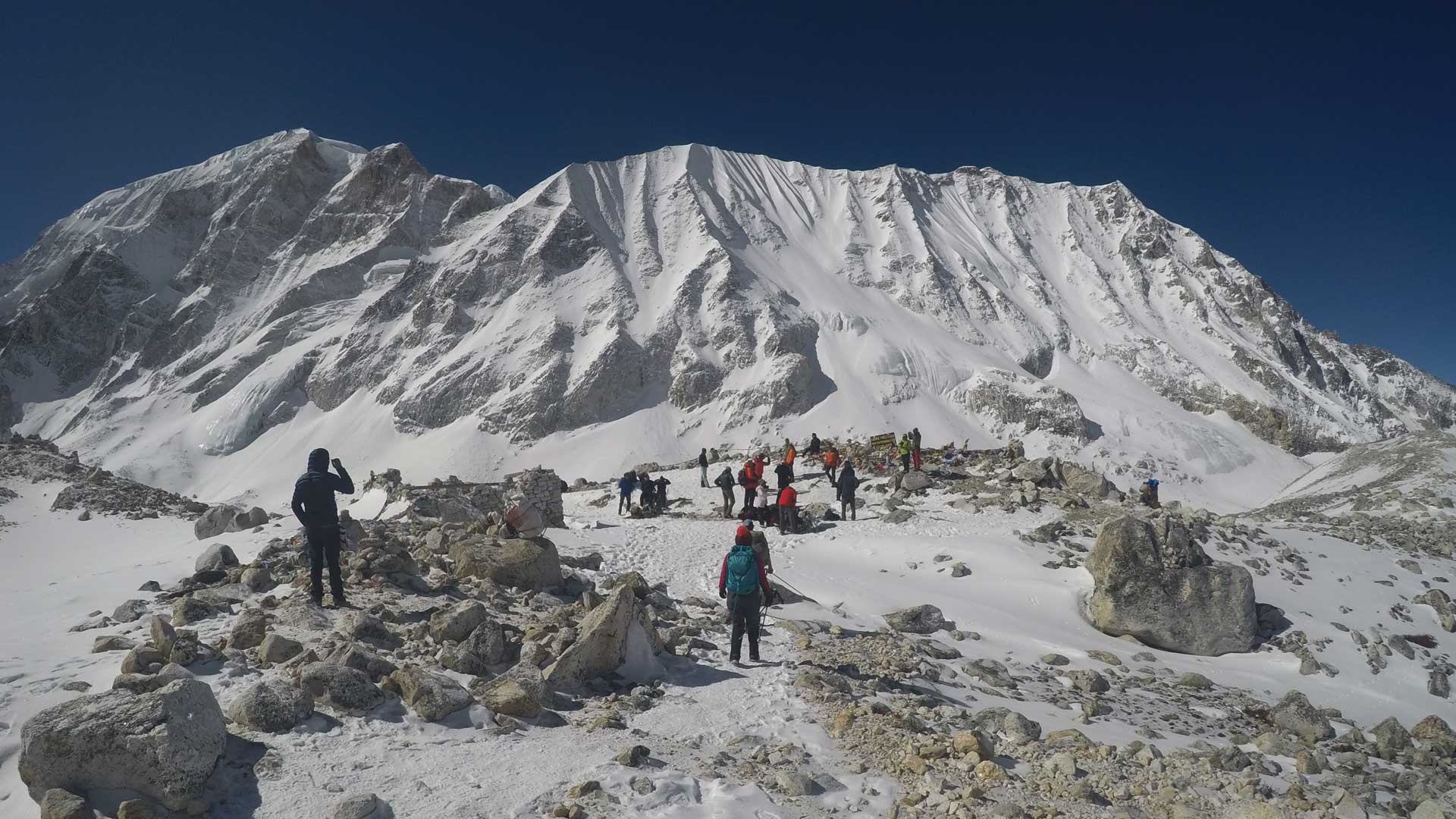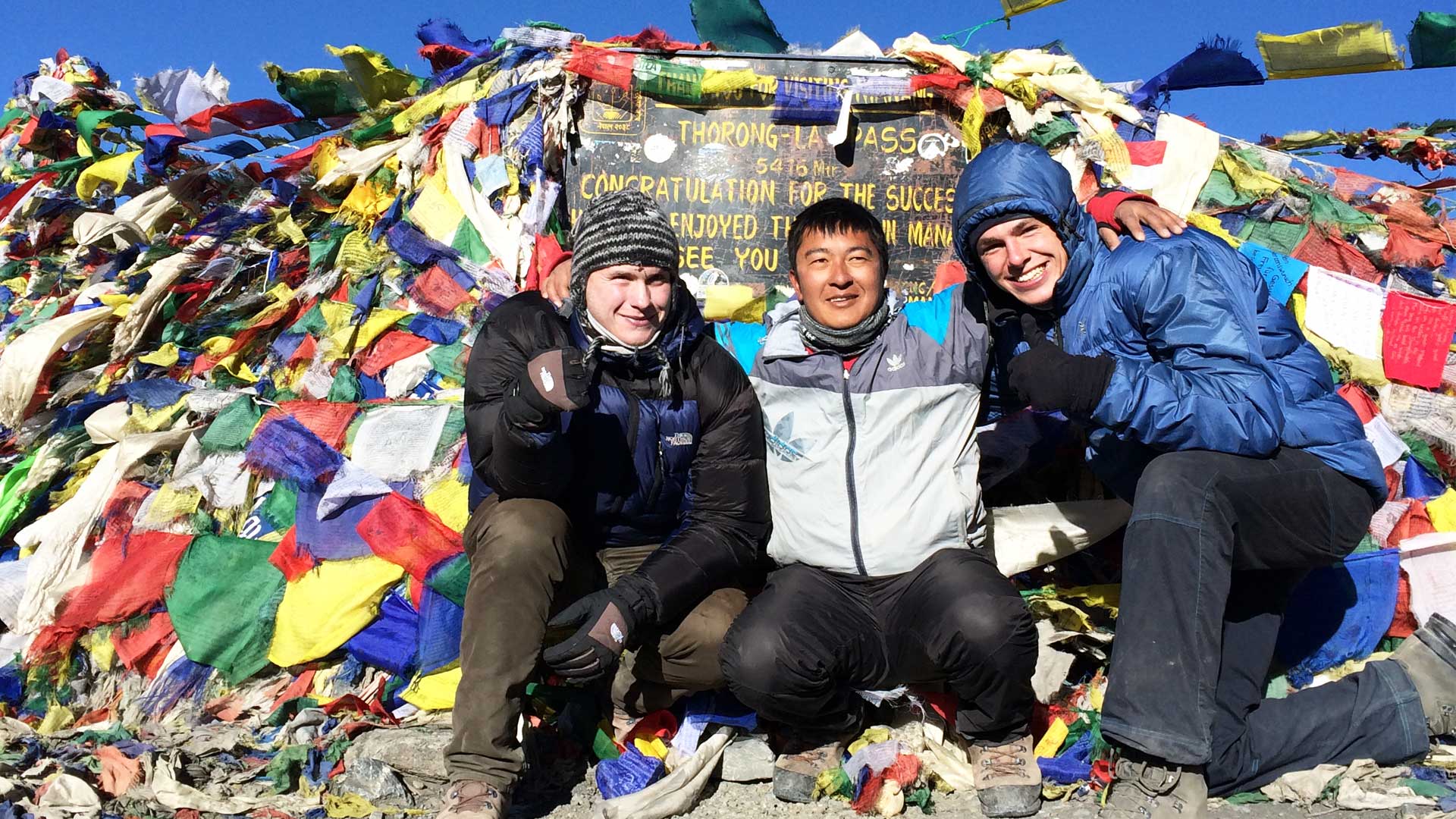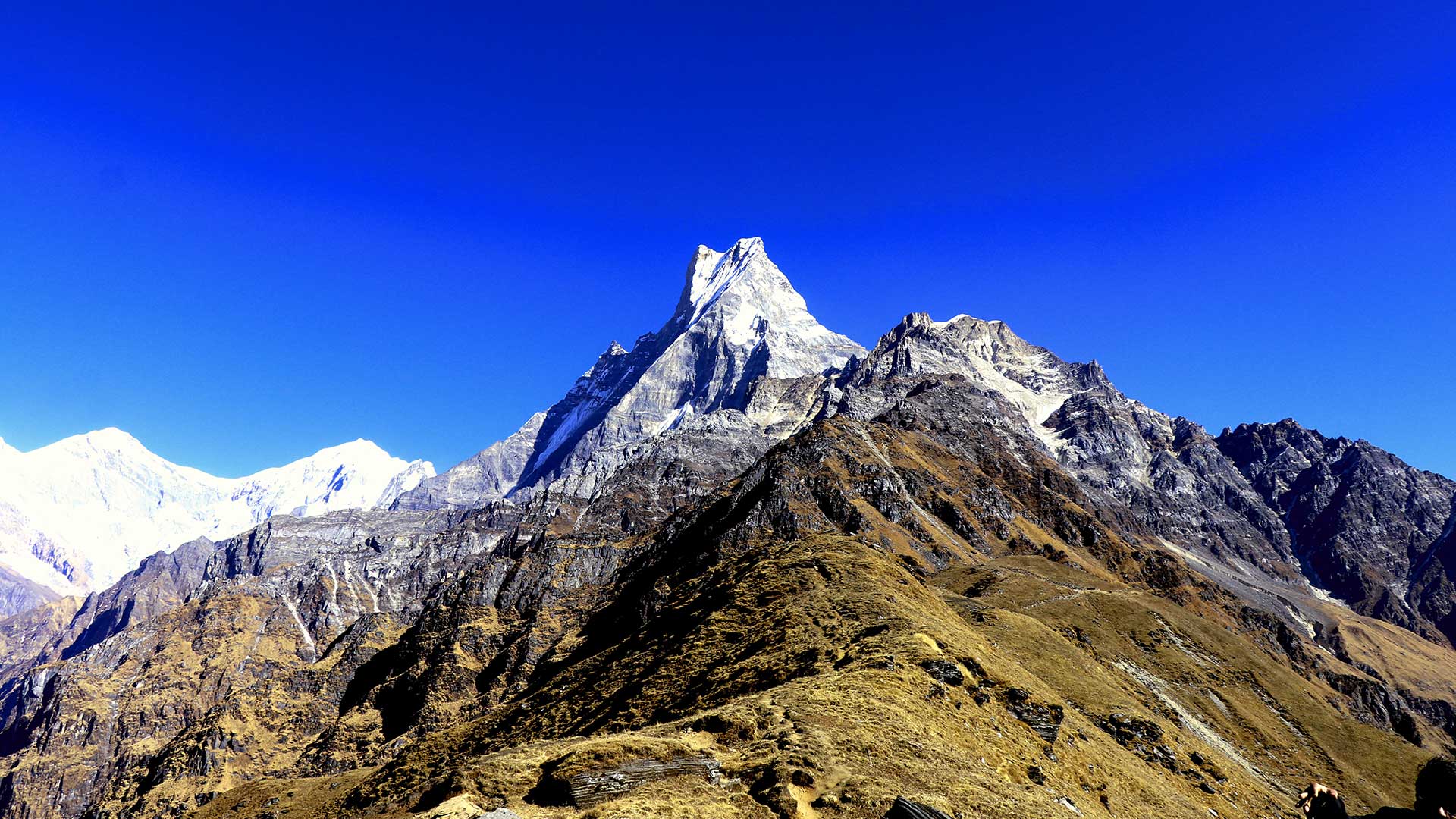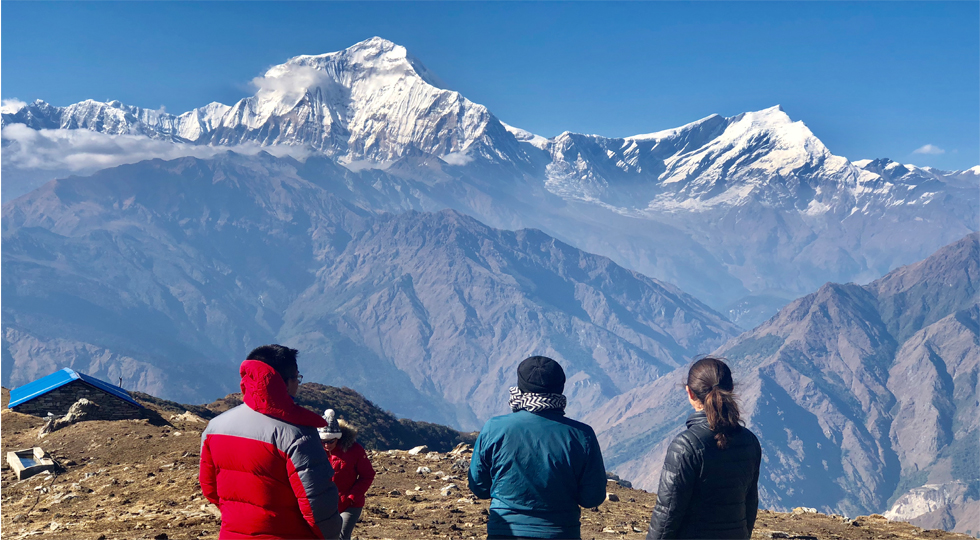Lobuche Peak Climbing
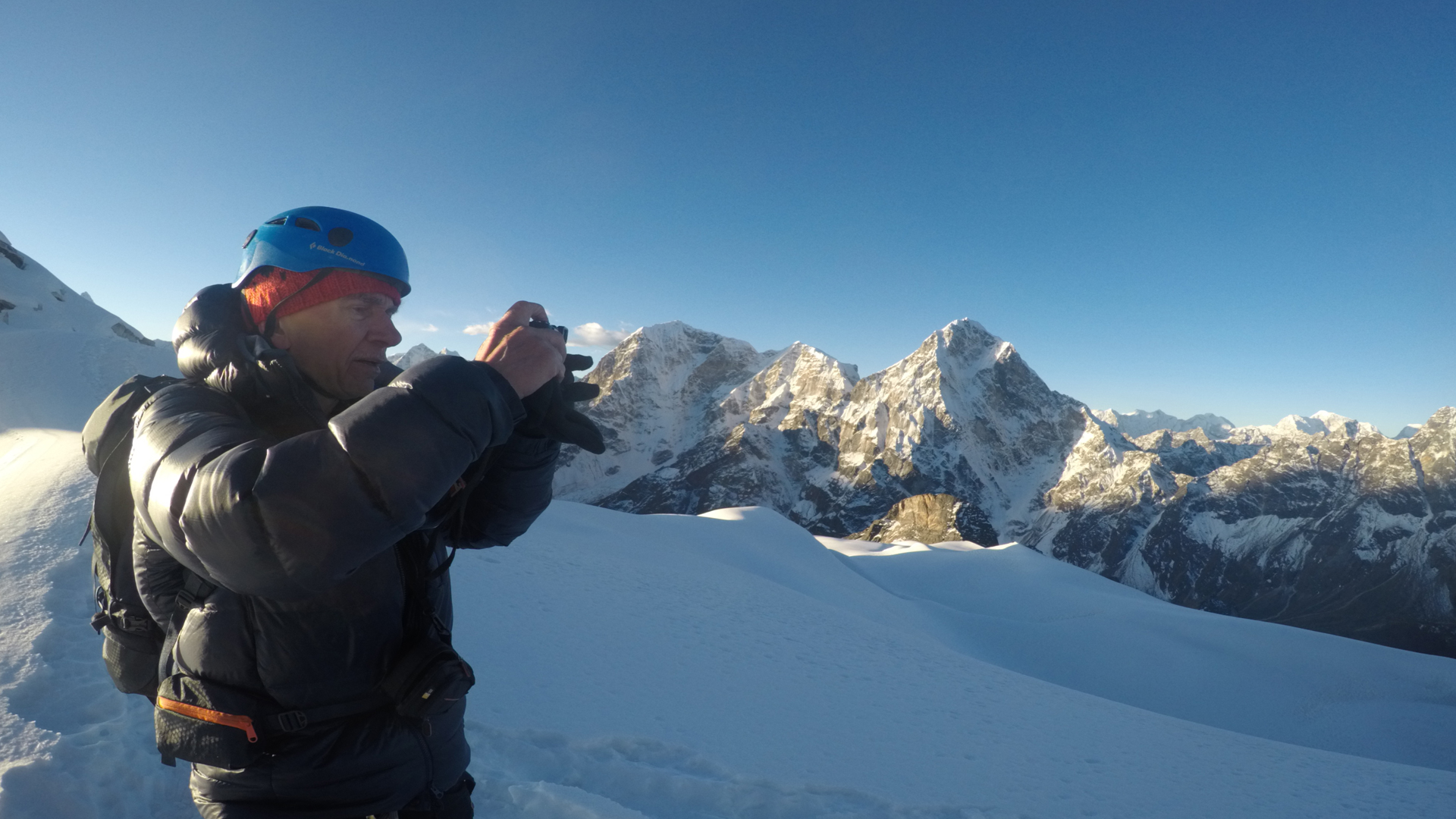
17 Days
6,145m
Spring & Autumn
Tea house + Tent
TRIP HIGHLIGHTS
1. Discover and enjoy the spectacular beauty of the world's most difficult hiking and climbing location, the Khumbu Everest region.
2. Interact with the famed Sherpa people, sample their cuisine, and respect their culture, religion, and way of life.
3. Take a thrilling tiny plane journey from Kathmandu/Manthali Ramechhap to Lukla Tenzing-Hillary Airport/Lukla Airport and back.
4. Photograph the breathtaking backdrops of gorgeous landscapes, attractive villages, angelic mountains, and lovely flora and faunas.
5. Climb the dream destination Lobuche peak (6,119m), leaving your mark like mountain legends Tenzing Norge Sherpa and Edmund Hillary did.
TRIP OVERVIEW
Lobuche Peak (6,119m) is an adventure trekking peak located on the way to the world's most popular Everest Base Camp Trek route. This peak was first ascended by Mr. Laurence Nielson and Ang Gyalzen Sherpa on April 25, 1984. After they climbed it, this mountain became quite popular among individuals seeking an adventure climbing experience in their lives. There are two major peaks to climb: Lobuche East Peak (6,119m) and Labuche West Peak (6,145m). According to the National Mountaineering Association of Nepal (NMA), Lobuche east is the most climbed summit, followed by Lobuche west.
Lobuche peak is situated just over the Lobuche village, close to the world-famous Khumbu Icefall and Khumbu Glacier. So, if you want to climb Labuche peak, you first get chance to hike Everest Base Camp (5,364m) and Kalapattar (5,545m), which helps you acclimatize for the ascent. There are no tea houses or hotels at Lobuche base camp. You will have to consume meals and overnight in a tent with our climbing crew members for 2-3 days. Be assured that we will organize everything that is required for you, such as tea, coffee, soups, breakfast, lunch, and dinner.
Before ascending the Labuche peak, our climbing guide will instruct you how to utilize the climbing equipment and provide safety tips. The Himalayan panorama from the summit of Labuche peak is breathtaking. You find yourself in the heart of the Himalayas, surrounded by Mt. Everest (8,848m), Mt. Lhotse (8516m), Mt. Nuptse, Mt. Pumori, Mt. Amadablam, Mt. Makalu, and other heavenly white slopes. Furthermore, Labuche Peak has grown into the most popular acclimatization climbing peak among Mt. Everest Expedition groups, surpassing the well-known Imjaptse Valley's Island Peak climbing.
Foods and accommodations in Lobuche Peak Climbing
In Kathmandu, you can find an excellent and comfortable hotel that includes bed and breakfast. You have a choice of breakfast, lunch, and dinner with 3 cups of tea or relevant products while trekking. You get two rooms for the same sex that are neat and clean, with an outside shared bathroom. You have the option to purchase foods that are quite common and easy, such as a variety of Mo: Mo, Spaghetti, noodle, egg, Nepali favorite food Dal-Bhat with vegetables for lunch and dinner. Additionally, toast with Jam and honey, Tibetan bread with Jam and honey, plain chapati, Muscly with milk, Oat porridge, Muscly with fruits, and other bakery items with a variety of tea and coffee are offered.
The high-altitude sickness in Lobuche Peak Climbing
Altitude sickness symptoms range from moderate to severe and include headache, nausea or vomiting, weariness or weakness, dizziness, shortness of breath, sleeplessness, and lack of appetite. In extreme situations such as high-altitude pulmonary edema (HAPE) and high-altitude cerebral edema (HACE), which can be fatal.
High altitude sickness is a dangerous medical condition in the Himalayas. It is not advised to hike and climb the mountain if you have a heart, brain, or deep injured body part, high blood pressure, or any other health issue. There are various causes of high-altitude sickness when ascending in the Himalayas. The biggest issue is thin air and exposed body parts. High-altitude sickness is prevented if you continue consume a balanced meal, drink plenty of water, dress warmly, and walk carefully while maintaining a high elevation. If you have symptoms of high-altitude sickness, the best approach is to descend to a lower altitude as soon as possible.
TIMS and Permit for Labuche Peak Climbing
All climbers require a climbing permit since Labuche Peak is registered with the Nepal Mountaineering Association (NMA). The permit cost varies according to season. Climbing Labuche peak from September to December costs US$150 per person, whereas March to May and June costs US$250. The peak permit is issued by the Nepal Mountaineering Association in Hattisar, Kathmandu. You additionally need a permit from the Sagarmatha National Park Conservation Area Project and a permit from the Khumbu Pashang Lhamu Rural Municipality to trek and climb.
Best time for Labuche Peak Climbing
Labuche peak is a technical climbing peak that requires medium climbing skill, such as climbing gear play and some technical knowledge of snow and ice. The ideal months to climb Labuche peak are October, November, and mid-December in the autumn, and April, May, and June in the spring. Because of the clear weather, excellent visibility, and pleasant temperatures, these months are best for climbing this peak. You can climb Labuche peak in December, January, and February if you prefer, but you will have to face with Himalayan cold and possibly frostbite in your feet and fingers.
SHORT ITINERARY
Day 1: Arrival in Kathmandu
Day 2: Sightseeing around Kathmandu valley
Day 3: Fly to Lukla (2,840m) then trek to Phakding (2,700m)
Day 4: Trek to Namche Bazaar (3440m)
Day 5: Acclimatization Day
Day 6: Trek to Phortse Village
Day 7: Trek to Dingboche Village (4,400m)
Day 8: Acclimatization Day
Day 9: Trek to Lobuche Village
Day 10: Trek to the last village Gorakshep, (5,100m)
Day 11: Hiking to Kalapattar and trek to Labuche base camp (5,550m)
Day 12 and 13: Climb Lobuche Peak and Back to Pheriche (5,300m)
Day 14: Trek to Namche Bazaar
Day 15: Trek to Lukla
Day 16: Fly back to Kathmandu and transfer to the hotel
Day 17: Final day and departure
DETAILED ITINERARY
Day 1: Arrival in Kathmandu
It's your first day in Nepal. Please inform us your arrival time in Kathmandu, Nepal, and we will pick you up from the airport and transport you to the hotel. We will meet you in the hotel lobby at 5 p.m. to talk about your programs. If you have unpaid dues, kindly pay them at our first meeting. Overnight in the hotel and breakfast.
Day 2: Sightseeing around Kathmandu valley
After breakfast, our tour guide will take you to the historic city sightseeing, consisting of Swoyambhunath Buddhist Stupa, Boudhanath Buddhist Monastery, Pashupatinath Hindu Temple, and Kathmandu Durbar Square. All of these locations are UNESCO World Heritage Sites. After observing these sites, go over your packing list and get ready to trek or climb Lobuche Peak. We will meet you in the hotel lobby about 6: p.m. and offer you with a welcome supper at a cultural restaurant in Kathmandu. Overnight in the hotel with bed and breakfast.
Day 3: Fly to Lukla (2,840m) then trek to Phakding (2,700m)
Get ready for traveling early in the morning. If possible, we will arrange you a direct flight from Kathmandu to Lukla. Otherwise, we will offer you with a private vehicle from Kathmandu to Manthali Ramechhap and then fly to Lukla Tenzin Hillary airport where you will meet your trekking crew staffs who will assist you with your luggage. From today, we will provide you with bed, breakfast, lunch, dinner, and 3 cups of tea or relevant stuff every day, and all of these things are customizable. You can only take a single item at a time. You can consume a bowl of soup every day if you want. Today, you walk through picturesque Sherpa villages above Lukla, with astonishing views of Khumbila, Kusum-Kangaroo, and Kwongde peak. Overnight hotel at Phakding.
Day 4: Trek to Namche Bazaar (3440m)
Every day, we recommend that you take breakfast at 7 a.m. and then begin your trip. The trail takes you up and down a rough track, passing many swinging bridges and tiny villages. The Jorsalle checkpoint checks your Sagarmatha National Park permit and keeps a tourist record. On the middle of the trail called Top Danda, you can see the glimpse of Mt. Everest and Mt. Lhotse, both of these mountains are above 8,000m. Overnight hotel at Namche Bazaar.
Day 5: Acclimatization Day
Today is your free day. Normally, trekkers hike to the Everest vantage point early in the morning for sunrise before returning to the guesthouse for some relaxation. Some hikers visit Khumjung and Khunde green valley for side trips, which may include an Everest view point. If you're interested to visit these areas, our guide is always ready to assist you. You can visit the Everest Mountain Museum, which stands on the top of Namche Bazaar, and observe the struggles of the legendary Sherpas, as well as beautiful historical photographs. Overnight hotel at Namche Bazaar.
Day 6: Trek to Phortse Village
Every day, the path leads you to a high-altitude side with magnificent mountain views and a chance to witness some rare wildlife and birds preserved by the Sagarmatha National Park conservation area project. The path departs from Kyangjuma, where the main trek to Everest Base Camp continues, and another path follows the Gokyo Valley Trek. The Gokyo valley trekking path continues till Phortse Tanga, when it separates. You eat lunch at Mong Dada while admiring the breathtaking view of Mt. Aamadablam, then continue trekking to Phortse village. Overnight hotel at Phortse village.
Day 7: Trek to Dingboche Village (4,400m)
After a hearty breakfast in a picturesque village. The steep walk takes you to a close-up magical view point of Mt. Everest and adjacent peaks. You stop for lunch in Pangboche or Somare before continuing on to Dingboche, which is similar to Phortse. Dingboche is a lovely highland settlement, as well as the well-known Imjatse valley, which is surrounded by the Khumbu Himalayas. Overnight hotel at Dingboche.
Day 8: Acclimatization Day
Today is your extra day in Dingboche to acclimate and get ready for your next high-altitude adventure. You can hike to Nagarjuna Hill for an outstanding Imjatse vista or to the top side of Chhukung Island for a side trip. Both paths are excellent for acclimatization and exploring the Himalayan panoramas. Dingboche can serve as your final shower stop before heading to Everest Base Camp, Kalapattar, and climbing Labuche peak. Take caution with your food and beverages. We typically do not advise taking meat or oily foods while ascending trekking or climbing mountain peaks. Overnight hotel at Dingboche.
Day 9: Trek to Lobuche Village
The trail brings you numerous steps up to the breathtaking panorama of the Khumbu glacier side. Some people do not feel comfortable walking and sleeping from above Dingboche, so we strongly advise you to spend one more night at Dingboche to help you acclimate and be safe. Normally, you climb up the rocky trail until you reach Labuche. During the day, you can visit the Pyramid side or proceed on a short hike to the Everest Khumbu glacier. Overnight hotel at Lobuche Village.
Day 10: Trek to the last village Gorakshep, (5,100m)
Gorekshep is an excellent place and the last village where you can spend the night. When you arrive in Gorakshep, you enjoy the day encountering the world's most popular trekking location Everest Base Camp. You feel wonderful moment when you touch the footprints of several adventure travelers. You can take pictures with your tour companions and succeed in breaking the Himalayan record. Overnight Hotel at the last village Goraksep.
Day 11: Hiking to Kalapattar and trek to Labuche base camp (5,550m)
You hike to Kalapattar early in the morning for an amazing sunrise view from above the gigantic peaks of Mt. Everest and Lhotse, take dozens of photos and videos of the magnificent Khumbu glacier and Khumbu ice fall then return to your hotel, enjoy breakfast, and continue your trek to Labuche Base Camp. Overnight at Tent Camp. Includes: Everything required.
Day 12 and 13: Climb Lobuche Peak and Back to Pheriche (5,300m)
The path to the top of Lobuche peak (6,119m) is rocky and snowy. Please arrive at around 2-3 a.m., follow the instructions of our climbing guide, take some cups of tea or relevant foods, pack some packing snacks, and carry 2-3 liters of boiled water before beginning your climb. The first rocky part is really challenging. When you reach the snow part, it is extremely difficult but the wonderful morning when the sun hits the various summits are absolutely breathtaking. The trail obliges you to be extremely careful while climbing. Take numerous photos and videos if you want. After successfully completing the climb, descend to the base camp very carefully, eat some food, then journey back to Pheriche. Overnight hotel at Pheriche.
Day 14: Trek to Namche Bazaar
Today, you return to Pangboche along the same route, where the trail splits and you continue your hike to Namche market via the renowned Tengboche monastery. You can have lunch at Tengboche, visit the Monastery before continuing on to Namche Bazaar. Overnight hotel at Namche Bazaar.
Day 15: Trek to Lukla
You return the same way back to Lukla. You can celebrate your last trekking day in Lukla with your adventure friends that assisted you every step of your journey, with cheer beer and alcoholic beverages and great cuisine. Please don't forget to give some tips to the guide and crew staffs, as these are the basic norms of hospitality companies all over the world.
Day 16: Fly back to Kathmandu and transfer to the hotel
Be prepared to leave early in the morning because we normally book our tickets during the first time. The flight departs around 6:30 a.m.; however, it isn't sure to have breakfast in Lukla or Kathmandu. We will transport you from the domestic airport to the hotel by private Jeep, and you will have the rest of the day free. You can relax by dining Asian to Western foods in Thamel or by getting a massage during the day. We serve a farewell meal and talk your tour before you spend the night at your hotel.
Day 17: Final day and departure
Today is your last trekking and climbing day at this time. We departure you at Tribhuvan International Airport in Kathmandu and say good bye. Please be pleasant and leave feedback on our services; we hope you will come as our guest and return as intimate friends.
FREQUENTLY ASKED QUESTIONS
Is Lobuche Peak easy to climb?
Lobuche Peak (6,119m) is the most popular trekking peak in the Everest regions of Nepal. There are two major peaks, Lobuche East and Lobuche West. Lobuche East is the most commonly climbed peak and is considered a technical climb. The climbers need have an adequate level of physical and mental fitness, basic climbing skills, and sufficient acclimatization due to the high altitude and physical demands. As a result, it is a challenging peak.
How long does it take time to climb Lobuche Peak?
Lobuche East Peak typically takes 17 to 20 days to climb. It is determined by some of elements, including the route chosen, acclimatization days, weather conditions, visitor’s mental and physical health, peak climbing experience and other unforeseeable circumstances. Around Nepal Tour and Trek Private Limited Company organizes a 17-day program for climbing East Lobuche Peak.
Can we see Everest from Lobuche Peak?
Yes, you can see Mount Everest, the world's highest peak. While at the top of Lobuche East, the Lobuche Peak Climbing route, such as popular vantage points Kalapatthar and Gorak Shep, offer numerous opportunities to capture glimpses of Mount Everest and other stunning snowcapped peaks like Lhotse and Nuptse.
How much does it cost to climb Lobuche Peak?
The cost of climbing Lobuche Peak varies based on many different kinds of factors including the quality of service, the duration of the climb, the number of climbers in group, the trekking or climbing route you choose, climbing gears you choose and the trekking company you choose. Around Nepal Tour and Trek Private Limited Company charges USD 2,695 per person for a 17-day program to climb Lobuche Peak.
Is Lobuche a trekking peak?
Lobuche East is designated by the Nepal Mountaineering Association (NMA) as a trekking peak. Climbers with modest climbing experience and basic mountaineering skill can successfully climb Lobuche East Peak.
How technical is Lobuche Peak?
Lobuche peak is a moderately difficult climb. Climbers require basic climbing skills and experience. Climbers require being familiar with roped glacier travel, avalanche rescue procedures, and the use of crampons and ice axes. Throughout the climb, the professional guide will support and advise you on how to ascend the Lobuche Peak. Safety and appropriate preparation, like with any high altitude climb, should be the primary priorities.
